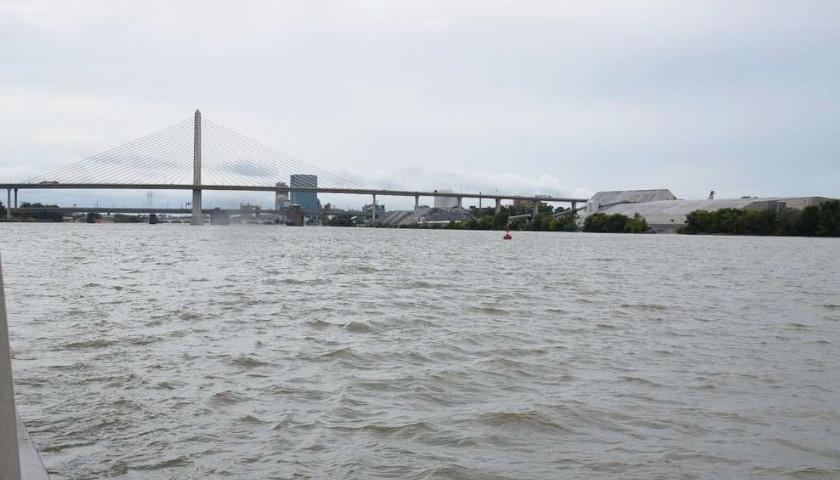by Carly Moran
Ohio Gov. Mike DeWine plans to include the health of the state’s large rivers in the ongoing H2Ohio program aimed at water efforts.
Since 2019, H2Ohio has predominantly worked on water infrastructure in low-income areas, wetland creation and reducing algal blooms. Now the program will expand to research PFAS contamination, remove eroding dams, conserve forest buffers and more.
“We know that river health in Ohio has improved tremendously in the last several decades, but there is still more work to do,” DeWine said. “Water is one of Ohio’s greatest assets, and my administration is dedicated to protecting this invaluable resource.”
The expansion of H2Ohio comes from bipartisan support through the General Assembly, which appropriated $270 million toward H2Ohio, with $47 million dedicated to the rivers conservation project. The funding will be allotted to various state natural resource departments, including the Ohio Environmental Protection Agency, the Ohio Department of Natural Resources, the Ohio Department of Agriculture, as well as local agencies.
Through the new H2Ohio Rivers program, Ohio will become the first state in the nation to research the existence of per- and polyfluoroalkyl substances in 29 of its rivers. Also referred to as “forever chemicals,” PFAS are toxic manmade compounds produced during industrial activity often associated with high cholesterol, low birth weight, thyroid disease, as well as kidney and testicular cancer.
In 2019, DeWine had previously tested multiple public drinking water systems, and found 6% of Ohio’s 1,550 public water systems had PFAS compounds. Phase two, now under way, focuses on prevention of future chemical contamination.
“Testing for PFAS in Ohio’s rivers is just the latest of several steps that the DeWine-Husted Administration has taken to protect Ohioans from the largely unknown risks associated with PFAS exposure,” Anne Vogel, director of the Ohio EPA said.
River sampling for PFAS is expected to be completed in the fall of 2024.
The H2Ohio Rivers program will remove or replace deteriorating dams, beginning with the Great Miami River dams in Troy and Piqua, which are harming water quality through trapped sediment and interrupted fish migration. The sheet pile dam in Piqua will be modified and replaced to allow for habitat restoration.
“We are excited to expand our water quality efforts into Ohio rivers, increasing accessibility to clean water for communities across the state,” ODNR director Mary Mertz said. “The initiative we’re taking through the H2Ohio Rivers program will indicate which rivers need the most help and which rivers are healthy in order to help us plan how to approach both scenarios.”
Following the dam removals, ODNR will test freshwater mussels, a determiner of water pollution, beginning in the spring of 2024.
Riparian buffers, also known as riverside forests, will also be preserved through the H2Ohio Rivers program. The roots of riverside vegetation absorb negative nutrients that can otherwise pollute waterways, as well as provide food and shelter for wildlife.
Alongside the ODNR and ODA, the H2Ohio Rivers program will implement a Conservation Reserve Enhancement Program for the Great Miami River and State Scenic Little Miami River watersheds. CREP, already active with both the Lake Erie and Scioto watersheds, incentivizes farmers to set aside sensitive acreage to reduce nutrient and sediment runoff into local waterways.
“Farmers are the original conservationists,” ODA Director Brian Baldridge said. “With the expansion of Ohio’s CREP, producers who have land that may not be productive in row-crop agriculture will now be eligible for conservation practices that will improve water quality in the Miami River watershed and beyond.”
The new Miami Rivers CREP region contains 1.9 million acres of cropland, 60,000 acres of which the program hopes to implement conservation practices. While currently only available to farmers in the Western Lake Erie Basin, all farmers across the state will be able to participate in the nutrient runoff prevention program beginning in 2024.
“Northwest Ohio agricultural producers have stepped up to put H2Ohio practices in place that are scientifically proven to reduce the nutrient runoff that contributes to algal blooms on Lake Erie,” DeWine said. “With the expansion of this program statewide, we can now tackle the issue of nutrient runoff in other parts of the state and improve the quality of even more Ohio waterways.”
– – –
Carly Moran is a contributor to The Center Square.





